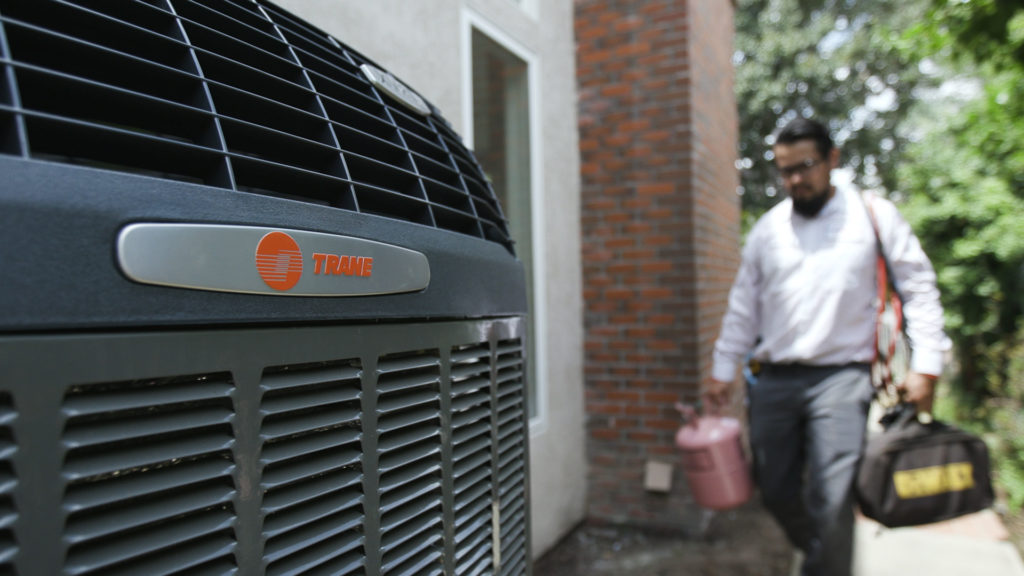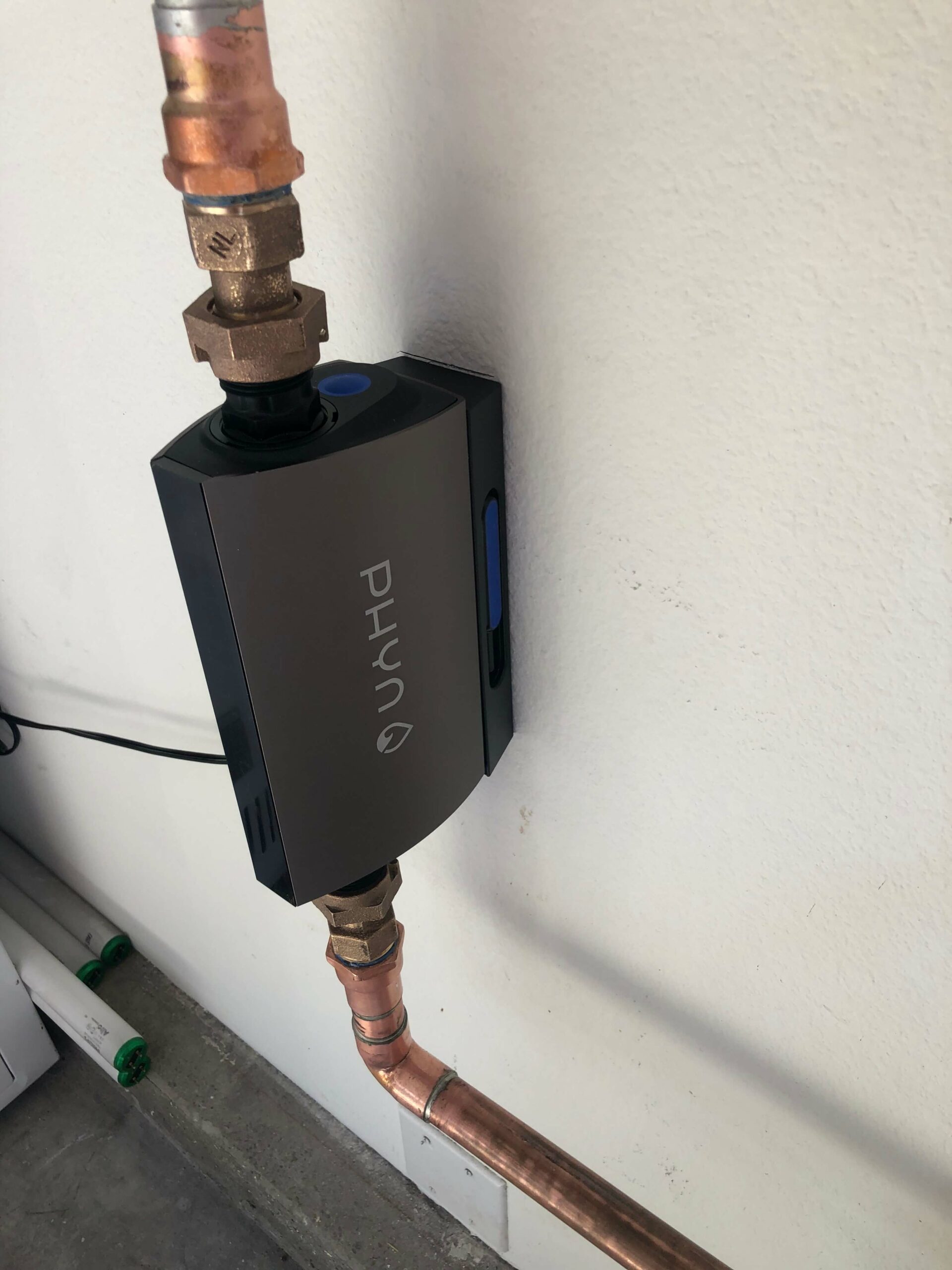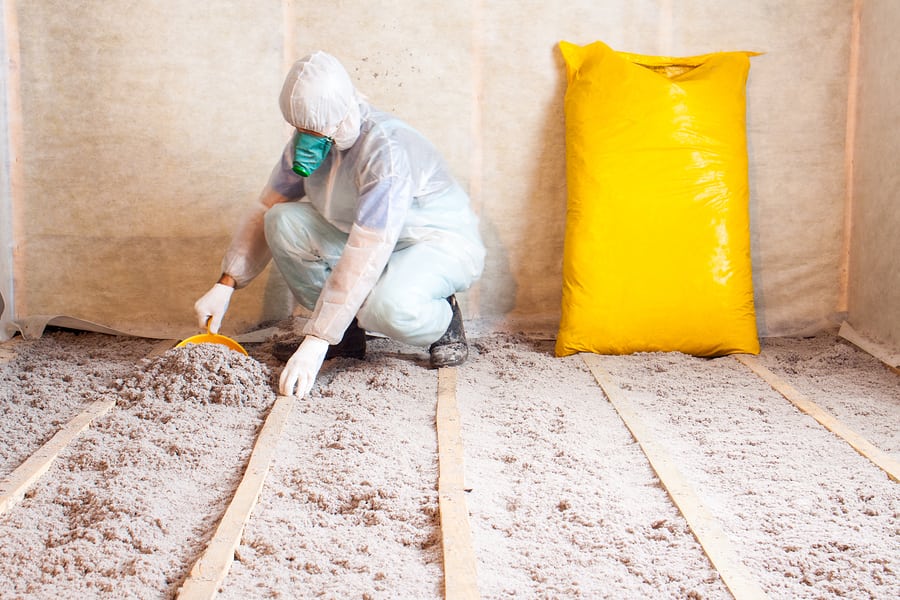5 HVAC Tips for Fall

As the weather changes and you go from enjoying warm summer days to trying to survive those frigid fall nights there is no doubt that you will begin using your heater much more frequently. We all know there is a direct correlation between heater usage and power bill costs but there are a few tips you could use to diminish some unnecessary costs. There are a few things most people are losing money on that are solved with a quick fix. We will discuss a few things to help you save money, as well as a few other tips to help you be a safe, happy homeowner.
Air Filter
One of the easiest things you can do to improve your air quality and furnace efficiency is to remember to replace your air filter monthly. Most people ignore this simple maintenance task but it will change everything! If your family is one that struggles with allergies or maybe has pets, changing your filter is crucial to assuring quality air is being sent through your air vents. The US Department of Energy states that changing your air filter monthly can save an average of around 5 to 15 percent in power bill costs yearly. This can be a lifesaver for some people's pockets but also will keep everyone living under your roof healthy and happy knowing they are breathing quality air.
Thermostat Awareness
Using a programmable thermostat can save hundreds of dollars each year. If you are a family who spends most of their time away during the week, it is crucial to have a programmable thermostat that keeps your home at a constant temperature. But not just any temperature, when you are away you should set your thermostat at a lower temperature to assure your furnace will not turn on for no reason. If you aren’t at home there is no reason to be blasting the heat. As routine maintenance, you should try to get your thermostat checked for accuracy whenever you have an HVAC team member around. A faulty thermostat can cause your heater to run because it is reading the incorrect temperature. This can burn a hole in your pocket if this issue is not noticed quickly.
Window and Door Insulation
As a homeowner, one of the most irritating things is knowing you have a leak because of faulty windows or doors. This can be one of the leading causes of high power bills, if air can come in then it can go out as well. Try using a door insulator that slides onto the bottom part of the door, it can kill any sort of draft you may have. Any home improvement store also sells window insulators, they can come in many shapes and sizes. If your windows are very leaky you may want to invest in window plastic covers that cover the entire window frame. They will save you A LOT of money during the winter by creating a barrier to block any sort of draft.
Carbon Monoxide Scares
If you own a gas powered furnace, a carbon monoxide alarm is a must. These heaters can become faulty and exhaust dangers carbon monoxide gas into your home. It is crucial to use an alarm to help you detect any scares. This gas is known to be odorless so it is best to get help.
HVAC Maintenance
To assure your heating and air conditioning is working at the highest capacity make sure to schedule routine maintenance checks with your local NexGen Air staff. This will give your furnace the longest lifespan possible as well as keep your systems working at maximum efficiency, having a huge effect on your entire home.
Call NexGen Today
Our expertise and commitment to customer satisfaction make us the leading HVAC company in Southern California. To learn more about our equipment, services, and protection plan,
book an appointment online or call
888-277-0415.
Types of Tankless Water Heaters

Tankless water heaters have become very popular lately for several good reasons. Tankless hot water heaters are more energy efficient than traditional units because they heat water as it is used, rather than heating and reheating water in a storage tank. They also take up significantly less physical space, as they do not have a bulky storage tank. But what kind is going to be right for your home and what should you know about them?
There are three types of tankless hot water heaters available:
Non-condensing:
This is the first generation of tankless unit. These units use a heat exchanger to heat your water on-demand, and reach an Efficiency Factor (EF) of .82-.85. This technology has been in use in Europe and Japan for decades and is well-proven. The advantage of this type of unit is in reliability in that they are established products with few manufacturing issues. Some of the drawbacks of non-condensing units include hot exhaust, which means you have to install (expensive) stainless steel venting, and lower energy efficiency – in particular, the efficiency of these units drop when you use lots of hot water in short draws (i.e. washing your hands).
Condensing:
Condensing units are the second generation of tankless water heaters. After a primary heat exchanger, these units use a second heat exchanger, which reuses the heat from your exhaust to further heat the water. This results in an increased efficiency of 92-94%. The benefit of cooler exhaust is that these units can be vented using (inexpensive) PVC, while the drawbacks included a higher unit cost and, similar to non-condensing units, a lower efficiency for short water draws.
Condensing hybrid:
Condensing hybrid units are the third generation of tankless water heaters and were pioneered in the United States. These heaters incorporate a small – between 1 liter and 2-gallon – holding tank. This small holding tank keeps a reservoir of hot water, eliminating lower efficiency for short draws, meaning these water heaters achieve a true EF of .92-.96. A recent study by the Gas Technology Institute measured real life efficiency of condensing hybrid tankless water heaters and found the units consistently operated at 94% efficiency with little to no degradation due to short draws.
These units can also be vented in PVC which is less expensive. In some cases, the units also addressed “cold water sandwich” issues and pressure fluctuations that sometimes occurred with first and second-generation models. There may also be slightly less lag in the time it takes to deliver hot water to the tap or appliance. One of the drawbacks (as of writing) of this technology is that because it’s newer, most models are manufactured by smaller companies. In some cases, there have been manufacturing-quality and warranty issues with these units. Product reliability is improving but it’s important to be careful about the brand you purchase.
Call NexGen HVAC & Plumbing
Our expertise and commitment to customer satisfaction make us the leading HVAC company in Southern California. To learn more about our equipment, services, and protection plan, book an appointment online or call 888-277-0415.
Southern California has the worst air pollution in the USA

If you've ever seen a brown haze of pollution hanging over your city, your most likely response may be, "Ugh. How can I avoid breathing that stuff?" But let's face it, even if you know it's a bad air day, you probably need to grab some sunshine, get in an outdoor run, or get to work.
Polluted air contains particulate matter, lead, ozone, nitrogen dioxide, carbon monoxide, and sulfur dioxide -- all of which can cause problems in people with allergies or asthma. Even if pollution is low, airborne pollen and mold can make a trip outdoors particularly daunting for people with respiratory conditions.
How to tell if it's a bad air day
The first step toward protecting your lungs is to know your city or town. More than 115 million people nationwide still live in counties with pollution levels considered potentially harmful to their health.
Air quality varies widely around the United States. Ozone, for instance -- which can pose a major problem for asthmatics -- tends to be more prevalent in urban areas like Los Angeles, though it can be found in suburban and rural areas as well. If you live in Fargo, North Dakota -- one of the cities with the cleanest air in the nation -- you are likely to breathe easier than if you live in Los Angeles, which has the highest ozone levels in the country.
Local weather stations often provide this information on their websites, and radio stations typically give ozone alerts. In addition, many websites can tell you if pollutants, ozone, or pollen counts are high in your area on any given day.
- AirNow.gov, a site run by federal government agencies, provides a daily Air Quality Index as well as other useful information on air quality.
- The American Academy of Allergy, Asthma & Immunology National Allergy Bureau has a daily mold and pollen report.
- The American Lung Association rates the air quality annually by state at stateoftheair.org.
- The Environmental Protection Agency has a feature on its website called My Environment, which gives you an up-to-date air-quality forecast for your zip code.
- Pollen.com offers a four-day allergy forecast using data from the National Weather Service.
However, it's not just pollen or air pollution that can trigger problems. Dr. Michael Benninger, M.D., the chairman of the Head and Neck Institute at the Cleveland Clinic, in Ohio, says changes in barometric pressure and temperature can also spell trouble for people with allergies to pollen and mold, people with severe sinus symptoms, and even people without allergies.
How to cope with bad air days
Once you've figured out what factors are most likely to pose a problem (usually by trial and error, or testing for allergies), and know the conditions in your area, there are several things you can do to cope.
One option is to reduce excessive exposure on days that might trigger symptoms. For example, Benninger recommends avoiding areas where pollen, mold, or other allergens are high. If you know that grass and trees are a problem, don't spend the day in a lush, tree-filled park; if you have to mow your lawn, wear a mask with a filter to reduce exposure to grass. Staying indoors with the windows closed and the air-conditioning on is also helpful, Benninger says.
Call NexGen Today
Our expertise and commitment to customer satisfaction make us the leading HVAC company in Southern California. To learn more about our equipment, services, and protection plan,
book an appointment online or call
888-277-0415.
3 HVAC Tips For Choosing the Best HVAC Contractor

1. Watch Out for HVAC Contractors that Give You an Estimate Over The Phone
Remember, every home is unique and has many nuances that make each HVAC installation or maintenance on a case-by-case basis. Watch out for HVAC contractors that give you a bid over the phone because there is no way they can know what exactly what your system consists of. There are many factors that go into a proper estimate such as ducting, insulation, and even windows. Make sure your contractor performs a Manual-J calculation for your air conditioning system. None of this can be done over the phone. If you get a phone estimate, take it with a grain of salt and make sure you get a proper estimate when the HVAC contractor comes over to check out your system.
2. Make Sure Your HVAC Contractor Installs the Proper Unit
Many contractors opt to install the same unit (albeit a newer model year) as before. Assuming the average HVAC unit lasts 10-15 years, you should make sure the newer model of your old unit has similar specs, otherwise, you should find something that is actually compatible with the dimensions of your home. A seasoned HVAC contractor will recommend several options to best improve the quality of your home's HVAC system.
3. Don't Take an HVAC Contractor's Years of Experience for Face Value
Many HVAC companies claim they have over 50 years of combined HVAC experience or something like that! Sure, that may be true, but when it comes down to the job, you may only have one or two new contractors with little experience actually working on your HVAC system. HVAC contractors that have nothing else to show other than their "years of experience" should raise a red flag. Make sure your contractor also has great customer reviews and a lot of photos from recent projects.
Also, watch out for HVAC contractors that say they've been following the same process for years. HVAC is still a technology that evolves, and with all evolving technologies come evolving methods and processes. Make sure your contractor is on the leading edge of HVAC technology.
Call NexGen Today
Our expertise and commitment to customer satisfaction make us the leading HVAC company in Southern California. To learn more about our equipment, services, and protection plan,
book an appointment online or call
888-277-0415.
5 Reasons Why Your HVAC System Could Be Causing Your Allergies

It has been proven that the quality of your home's indoor air can directly affect your family's health. According to the EPA, exposure to poor indoor air quality can cause immediate discomfort. They warn that the long term effects from extended periods of breathing indoor air pollution can also cause lingering and chronic illnesses. Many respiratory diseases and allergies have been linked to living in a home with dirty air.
After long periods of time, the concentrations of indoor pollution will continue to build up, and the resulting health effects can be debilitating and are often the cause of allergies. It is important to have regular maintenance of your HVAC system to eliminate or reduce the circulation of contaminants in your home. HVAC technicians that perform regular inspection and cleaning of your HVAC units and ductwork can also detect more serious conditions, such as carbon monoxide leakage which can be deadly.
1. Dust and Dirty Air Filters
HVAC maintenance may include removing dust from the register and return vents in the home. Also, a yearly replacement of your home’s furnace filters is crucial for good indoor air quality. Speak with your HVAC technician about the choices in high quality air filters that remove a greater amount of airborne particulates.
2. Mold in Home or AC Unit
Mold can thrive within different areas of you AC unit that are prone to humidity and moisture. These include the drip pan, evaporator coils, and within air ducts. Technicians are trained to detect mold and will advise on the best measures the homeowner should take for removal. If mold is circulated from other parts of your home by way of the duct system, the fungus spores will enter nose and lungs, presenting symptoms that resemble hay fever.
3. Pet Dander and Pollen Circulation
If someone in your family already experiences environmental allergies, then poor air quality from outside sources can enter your HVAC system and cause increased symptoms. According to WebMD, using HEPA filtersto trap these pollutants can help bring relief from allergies. With a HEPA filter, air is forced through such a fine mesh, that harmful and allergy-causing particles are trapped. If you are considering a HEPA filter, consult with an HVAC expert to determine if an upgrade to your HVAC system is required to handle the high energy required to pass air through these filters.
4. Carbon Monoxide Exposure
Low exposure to carbon monoxide can present symptoms that resemble allergies. Low concentration levels of CO in your home over long periods of time can cause nausea, headache, dizziness, and weakness. The mucous membranes are also affected and may eventually appear cherry red in color - this is an allergic reaction to the gas. Since carbon monoxide is odorless and tasteless, your HVAC technician can recommend a high quality CO detector to protect your home.
5. Lack of HVAC Maintenance
The overall health of your HVAC system can contribute to your indoor air quality and reduce or increase allergies. From regular cleaning, to high quality filters, and regular inspection for signs of biological contaminants - regular HVAC maintenance will help reduce the allergic symptoms that your family is experiencing.
Call NexGen Today
Our expertise and commitment to customer satisfaction make us the leading HVAC company in Southern California. To learn more about our equipment, services, and protection plan,
book an appointment online or call
888-277-0415.
Can Proper Insulation Save You Money?

The main purpose of insulation is to slow down the transfer of heat from one area of your home to another. Even through floors, ceilings, and walls, heat always flows from warmer areas to cooler ones. This means that during the winter season, and due to the cold exterior, the heat in our houses flows outside.
Similarly, during the summer season, heat from the outdoors transfers into our cooler interior. To remove this heat, during summer months we run the air conditioner, and in winter we run furnaces to maintain the heat in our homes. This is to ensure a desirable room temperature, but this also means higher energy bills!
Does your cooling and heating system run for hours without stopping and without any noticeable change?
If so, you should consider adding insulation to your house.
Insulation Saves You Money
Heat moves from a warmer area into a colder area, but adding insulation to your home makes it difficult for heat to transfer, trapping it in the same place.
What makes our homes have poor insulation?
During the times when heating and cooling systems were not known or used commonly, our houses were built to automatically regulate indoor temperature. Thick insulation and strategically-placed windows were used as natural insulation. But in modern construction, our heating and cooling systems are now responsible for maintaining the temperature indoors.
In fact, they are the primary source of cooling as well as heating, making insulation a secondary concern. For instance, in many home constructions, builders purposefully cut costs by avoiding insulation.
Adding Insulation is Imperative
Adding insulation is no longer a tedious process. In fact, the whole process to install takes less time than most people think. For instance, insulation in spray form can be installed in the attic, above existing insulation. This stops the cold from transferring through the roof. Similarly, some crawl spaces or the basement in your house can also be a source of heat loss. You can avoid this by adding some special insulation panels to the ceilings of all of these spaces.
Call NexGen Today
Our expertise and commitment to customer satisfaction make us the leading HVAC company in Southern California. To learn more about our equipment, services, and protection plan,
book an appointment online or call
888-277-0415.














